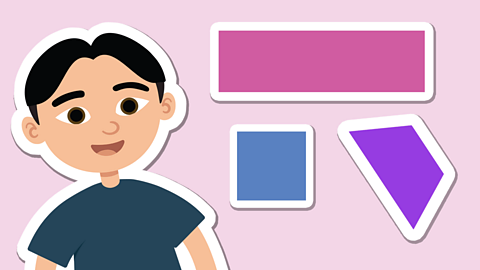What is a circle?
A circle is a shape where every point at its edge is the same distance from the centre.
A circular shape or object is one that is in the form of a circle.
How many of these circular objects can you name?
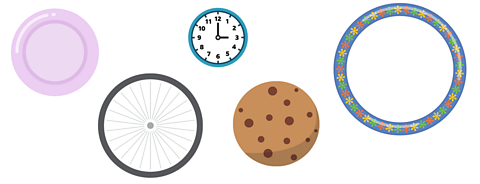
Quiz: Parts of a circle
Test out your knowledge of circles with this quiz, then read on to complete the page.
Parts of a circle
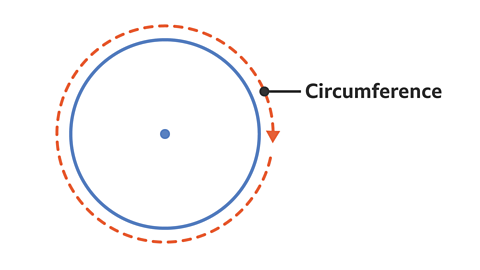
Image caption, Circumference
The circumference is the distance all the way round a circle.
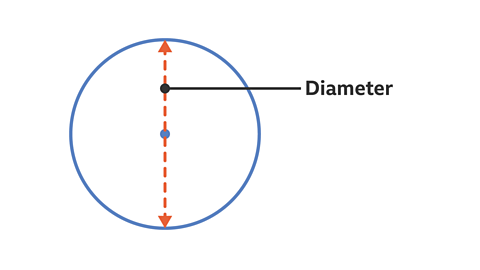
Image caption, Diameter
The diameter is a straight line drawn through the centre of a circle. It cuts the circle exactly in half.
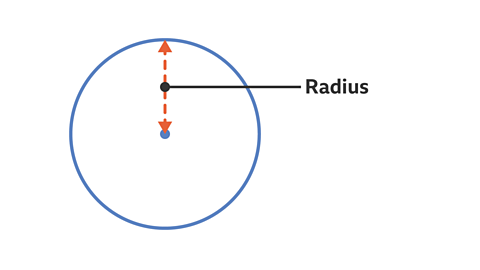
Image caption, Radius
The radius (or ‘radii’ for plural) is the length of a straight line from the centre of the circle to its circumference. All radii of a circle are the same length.
1 of 3
Example 1
The radius is the distance halfway across the circle, from the centre to the circumference. The radius is always half the length of the diameter.
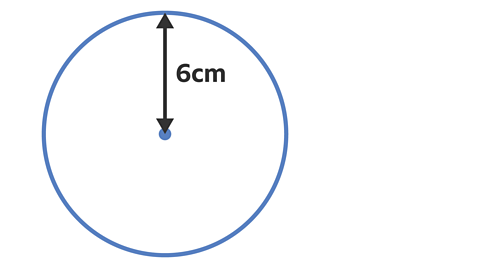
If you know the radius of this circle is 6cm, can you work out the diameter?
✓ If the radius = 6cm
Then the diameter is:
6cm × 2 = 12cm
Example 2
If you know the length of the diameter of a circle, you can halve it to work out the length of the radius.
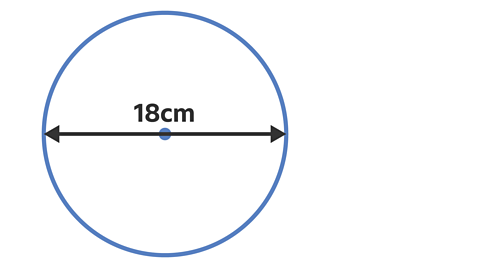
If you know the diameter of this circle is 18cm, can you work out the radius?
✓ If the diameter = 18cm
Then the radius is:
18cm ÷ 2 = 9cm
Example 3
Concentric circles are circles with the same centre point, but the length of their radius is different.
If you throw a pebble in a pond, the ripples show concentric circles.
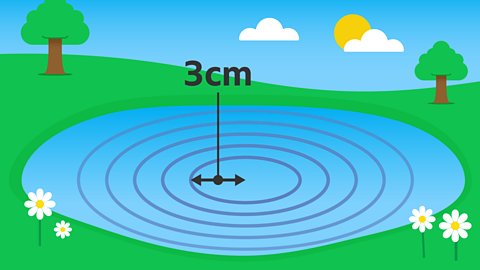
These concentric circles increase the length of the radius by 2cm each circle.
Can you work out the diameter of the largest circle?
✓ The radius of the first circle is shown as 3cm.
They then increase by 2cm each time:
5cm → 7cm → 9cm → 11cm
So, the radius of the largest circle is 11cm.
This means the diameter of the largest circle is:
11cm × 2 = 22cm
Play our fun maths game Guardians: Defenders of Mathematica. gamePlay our fun maths game Guardians: Defenders of Mathematica
Use your times tables and more maths skills to defeat monsters and reclaim the Kingdom of Mathematica

More on 2D shapes
Find out more by working through a topic
- count1 of 6
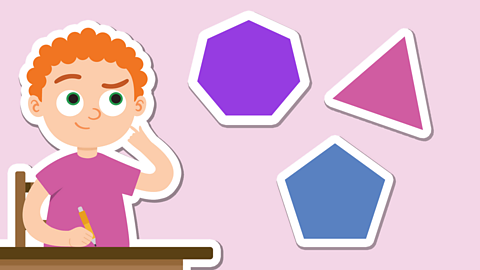
- count2 of 6
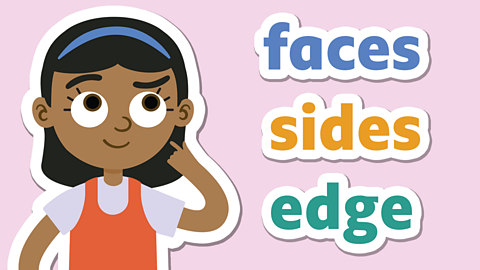
- count3 of 6
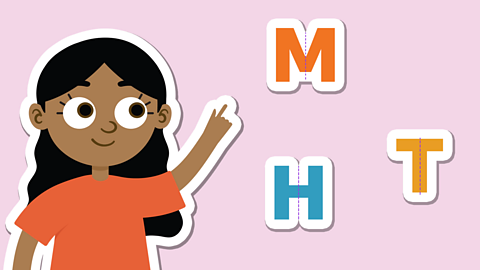
- count4 of 6
